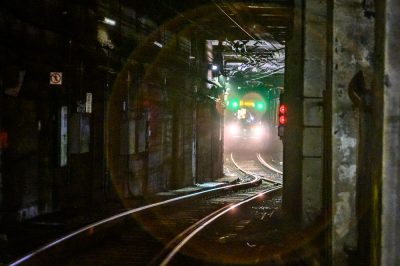The Massachusetts Bay Transportation Authority published the T’s “speed restrictions” in a report released Friday, making Boston the second city in the country, after Chicago, to have public data on its transit system’s slow zones. The authority will update its data monthly, a spokeswoman for the MBTA said.

The report identifies zones in each line where the T’s speed is restricted — in some areas, trains don’t move faster than 25 mph, while in others, the limit is at 10 mph. The Orange Line, most notably, has restrictions on 13.1% of the line, totaling nearly three miles of track, according to the report.
The report comes in response to a set of directives issued by the U.S. Department of Transportation and its Federal Transit Administration, which found numerous safety concerns in their 2022 inspection of the MBTA.
“It’s been a priority to share information the public is interested in knowing,” MBTA spokesperson Lisa Battison wrote in an email.
As of Jan. 31, the slowest section of the T is a 100-foot length of track in between Kenmore and Fenway stations, where the Green Line’s D Train speed is restricted to just three miles per hour, according to the report.
“It’s unacceptable that it’s possible for people to walk or ride a bike faster than the T,” U.S. Sen. Edward Markey said.
The era of a “paralyzed” T needs to end in order to better serve students and workers, Markey said.
“It is absolutely essential that we keep the pressure on so that we telescope the time that it takes so that people can once again think of the T as their friend and not a nightmare or headache that they face every morning as they leave their house,” Markey said.
The Chicago Transit Authority is the only other public transit system in the country known to publicly release information regarding their system’s “slow zones,” and has done so for more than 10 years, said CTA spokesperson Maddie Kilgannon.
Publishing slow zone data allows riders to have “the most accurate update” on information that changes throughout the year, Kilgannon said. Doing so is part of the culture at the CTA, she said, and it’s information riders “expect to know about.”
“Overall, more information for riders about the system is positive,” Kilgannon said.
The speed restrictions report is all part of what the MBTA calls a new online safety dashboard, allowing the public to now see the status of safety improvements following the Federal Transit Administration’s inspection of the MBTA last summer, which highlighted a higher rate of reported safety events than average.
“This public-facing dashboard will allow everyone to learn about the progress the MBTA is making to improve the safety and reliability of the system,” MBTA Secretary and CEO Gina Fiandaca wrote in a statement.
Battison wrote that the speed restrictions report is something the MBTA has been working on for months, and said the report will allow for the MBTA to provide a “safer and more reliable transit system.”
Transparency on the MBTA has been something Governor Maura Healey has emphasized since running for office last year, with her campaign website stating, “with sound policies, effective implementation and full transparency we can improve mobility and safety throughout the Commonwealth.”
“Governor Healey knows that transparency and communication are critical for restoring trust in our public transportation system,” Karissa Hand, a spokesperson for Healey, wrote in an email.
In an event in Lynn on Monday, Healey said her administration has been committed to transparency when it comes to the MBTA.
“We put that information out for commuters so that people can plan their days and their travel and commute,” Healey said.






















































































































